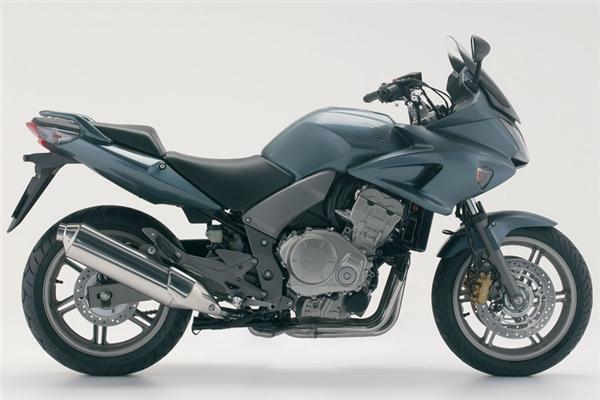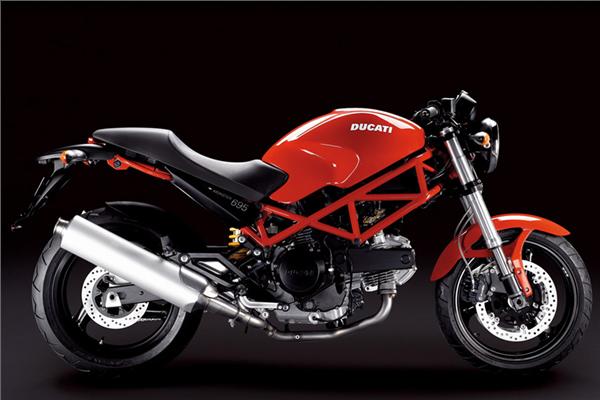GT1000 (2006 - 2009) review
No two ways about it, Ducati’s Sport 1000 isn’t a comfy bike. It stretches you out like a rack and breaks both your wrists at anything less than 70mph with harsh suspension and aggressive clip-ons.
So not a bike for a casual ride, then. Oh no. I know, because I was going to hoof mine 500 miles from where I was in France to the Ducati plant in Bologna on some sort of dewey-eyed romantic road trip. After half an hour I changed my mind. Sundays only I think, and in short bursts, suit the rapidly middle-aging Sport 1000 owner.

No two ways about it, Ducati’s Sport 1000 isn’t a comfy bike. It stretches you out like a rack and breaks both your wrists at anything less than 70mph with harsh suspension and aggressive clip-ons.
So not a bike for a casual ride, then. Oh no. I know, because I was going to hoof mine 500 miles from where I was in France to the Ducati plant in Bologna on some sort of dewey-eyed romantic road trip. After half an hour I changed my mind. Sundays only I think, and in short bursts, suit the rapidly middle-aging Sport 1000 owner.
Ducati, funnily enough, knows this, and one factory insider (over tagliatelli in the Ducati museum), admitted the SportClassic range was, “maybe not so comfortable.”
Thus, after another raid of the not-so-distant-past, Ducati brings us the GT1000. This one we were promised (over ravioli this time) would be, “comfortable for everybody”.
And compared directly to its café racer siblings, the GT1000 is. It’s mostly the same bike, sharing the air-cooled, fuel-injected V-twin 1000DS engine and tubular steel frame, but the swingarm’s new and the old-fashioned looking Sachs shocks are likewise. The 43mm Marzocchi USD forks wear Brembo twin-pot calipers; the chromed spoked wheels are shod with old-looking, modern-compound Pirellis.
An extra 25mm fork offset gives the GT a longer wheelbase (1425mm) and combines with lazier rake and trail for a more relaxed ride. The 1971 Ducati GT750 provided the styling cues for the 2006 GT1000 and while the modern bike doesn’t possess the stark beauty of the original, it’s a reasonable tribute. The twin chromed pipes look the part, as do the round, chrome-trimmed clocks, slotted sidepanels and skinny 15-litre fuel tank.
Riding the GT1000 is far more Monster than Sport 1000. The riding position is easygoing, and the sit-up-and-beg bars are just where you want ’em. The seat (adorned with a tasteful period DUCATI logo) is just as easy on the arse too.
No surprises from the engine, either. It may be the workhorse of Ducati’s stable but it’s a good ’un with reasonable punch and delivery off the bottom, a healthy midrange and a semblance of top-end. While it seems soft at first the GT’s sporty pedigree shows when you give it a punt – it steers accurately, if not quickly and only bounces around on its springs under extreme duress. The brakes stop it, hard, and while it’s no supersports tool, it would blow a Triumph Thruxton into the weeds, with more character to boot.
It was only once I’d gotten away from our launch chaperones and legged it into the hills above Bologna for a mad half-hour that I started to get the GT1000. On one level, it’s retro-chic urban transport for the fashionistas with which the cities of Europe teem, and first impressions were of a bike that looked the part but had lost something in the translation. Initially it seemed soft and uninspired next to the Sport 1000.
But actually the GT’s simply a lot more practical, and therefore useable. You can take a passenger for starters and the accessories include groovy panniers and a fruity pair of Termi silencers. It goes well. It handles well, too. And I probably would ride a GT1000 on a 1000-mile, two-day round-trip.
Would I swap my Sport 1000 for one? Nah. I love the demanding, excruciating contraption. But the GT1000 proves you don’t always have to suffer for fashion.
No two ways about it, Ducati’s Sport 1000 isn’t a comfy bike. It stretches you out like a rack and breaks both your wrists at anything less than 70mph with harsh suspension and aggressive clip-ons.
So not a bike for a casual ride, then. Oh no. I know, because I was going to hoof mine 500 miles from where I was in France to the Ducati plant in Bologna on some sort of dewey-eyed romantic road trip. After half an hour I changed my mind. Sundays only I think, and in short bursts, suit the rapidly middle-aging Sport 1000 owner.
Ducati, funnily enough, knows this, and one factory insider (over tagliatelli in the Ducati museum), admitted the SportClassic range was, “maybe not so comfortable.”
Thus, after another raid of the not-so-distant-past, Ducati brings us the GT1000. This one we were promised (over ravioli this time) would be, “comfortable for everybody”.
And compared directly to its café racer siblings, the GT1000 is. It’s mostly the same bike, sharing the air-cooled, fuel-injected V-twin 1000DS engine and tubular steel frame, but the swingarm’s new and the old-fashioned looking Sachs shocks are likewise. The 43mm Marzocchi USD forks wear Brembo twin-pot calipers; the chromed spoked wheels are shod with old-looking, modern-compound Pirellis.
An extra 25mm fork offset gives the GT a longer wheelbase (1425mm) and combines with lazier rake and trail for a more relaxed ride. The 1971 Ducati GT750 provided the styling cues for the 2006 GT1000 and while the modern bike doesn’t possess the stark beauty of the original, it’s a reasonable tribute. The twin chromed pipes look the part, as do the round, chrome-trimmed clocks, slotted sidepanels and skinny 15-litre fuel tank.
Riding the GT1000 is far more Monster than Sport 1000. The riding position is easygoing, and the sit-up-and-beg bars are just where you want ’em. The seat (adorned with a tasteful period DUCATI logo) is just as easy on the arse too.
No surprises from the engine, either. It may be the workhorse of Ducati’s stable but it’s a good ’un with reasonable punch and delivery off the bottom, a healthy midrange and a semblance of top-end. While it seems soft at first the GT’s sporty pedigree shows when you give it a punt – it steers accurately, if not quickly and only bounces around on its springs under extreme duress. The brakes stop it, hard, and while it’s no supersports tool, it would blow a Triumph Thruxton into the weeds, with more character to boot.
It was only once I’d gotten away from our launch chaperones and legged it into the hills above Bologna for a mad half-hour that I started to get the GT1000. On one level, it’s retro-chic urban transport for the fashionistas with which the cities of Europe teem, and first impressions were of a bike that looked the part but had lost something in the translation. Initially it seemed soft and uninspired next to the Sport 1000.
But actually the GT’s simply a lot more practical, and therefore useable. You can take a passenger for starters and the accessories include groovy panniers and a fruity pair of Termi silencers. It goes well. It handles well, too. And I probably would ride a GT1000 on a 1000-mile, two-day round-trip.
Would I swap my Sport 1000 for one? Nah. I love the demanding, excruciating contraption. But the GT1000 proves you don’t always have to suffer for fashion.

